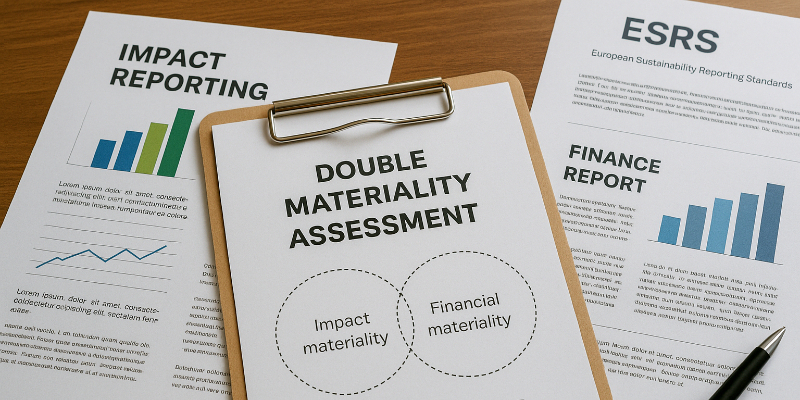

Double Materiality Assessment under the ESRS (2025)
Enroll today!
Take the next step in your professional development and help shape a more sustainable future.
Download the course brochure below for more details.
Course Content
This part explains the meaning of materiality and why it matters for credible sustainability reporting. You will explore how definitions have evolved, the role of stakeholders, and current trends. By the end, you will know how materiality frames the reporting process.
Here you will see how double materiality is built into the ESRS framework. You will learn how impact materiality and financial materiality work together and why both perspectives are required. This part clarifies what makes ESRS different from other standards.
In this part you will follow the basic steps of performing a materiality assessment. You’ll see how to identify topics, gather input, and prioritize issues. The focus is on giving you a clear process to apply in your own organization.
This part shows how to present and interpret the outcomes of your assessment. You will learn how to explain the decisions you made and communicate them in line with ESRS requirements. It helps you connect results to clear and credible reporting.
Here you’ll get practical advice on how to apply the concepts in real situations. You will see examples of challenges and how to address them in a structured way. These tips will help you avoid common pitfalls and strengthen your approach.
This part brings the ideas to life with real examples. You will see how companies have applied double materiality, what worked well, and what lessons they learned. These case studies give you concrete references for your own work.
Who is this course designed for?
The course is intended for those who are new to the practice of sustainability reporting and are faced with the CSRD reporting mandate. The course will also be valuable to sustainability consultants and assurance providers interested in the requirements of the ESRS regarding double materiality reporting.
What will you achieve?
When you have completed this course, you will be able to:
Pre-requisites
There are no specific prerequisites for this course, but basic knowledge of sustainability reporting and its relevance for organizations and stakeholders will be beneficial.
